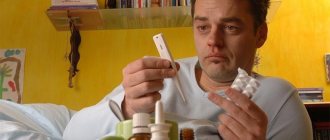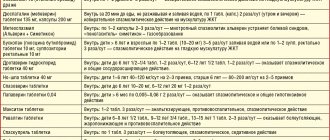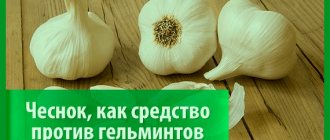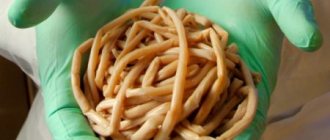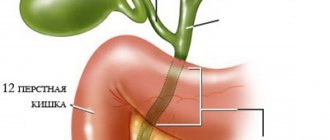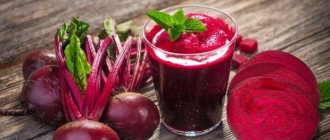Basic nutrition rules
Features of the diet for rotavirus infection are determined by the effect of the virus on the intestines. With this disease, the production of lactase in the intestines decreases, and restoration of the ability to produce this enzyme can take up to 2-3 weeks.
Features of nutrition for rotavirus infection:
- A child with rotavirus infection should be fed in portions. Drinks and food that are allowed to be consumed are given in small portions with short intervals between meals.
- If your child has lost his appetite, which often happens in the first days of this illness, do not force him. Offer your baby drinks and light meals periodically. And when the baby wants to eat, give food according to the therapeutic diet.
- Until the diarrhea ends, all food should be steamed or well boiled, and thoroughly chopped.
- In case of infection in an infant, the type of feeding is taken into account. If a child is fed formula milk, then during illness it is advised to replace it with formulas with a reduced lactose content. There is no need to stop breastfeeding during this infection.
- On the first day of illness, the child can be fed according to the BRYAS principle - according to this abbreviation, the baby can be given banana (ripe), rice (boiled), apples (in the form of puree) and crackers.
Sample menu
The dietary menu for a child who has contracted rotavirus may be something like this. This menu is an average and may not be suitable in any particular case, for example, if you have a food allergy:
- Breakfast: soft-boiled egg, dried white bread, chamomile tea.
- Lunch: chicken broth, a piece of chicken breast, dried fruit compote.
- Afternoon snack: baked apple, weak black tea.
- Dinner: turkey, mashed potatoes, rosehip broth.
Dishes recommended for patients with intestinal infections may seem tasteless to children and look unappetizing to them. In this case, parents should show their imagination and present the dish correctly - it is interesting to serve it, decorate it beautifully, come up with an interesting story so that the children want to eat this food. Nutrition for RVI is one of the most important factors on which the speed of recovery depends.
Switching to a special diet is a mandatory aspect of rotavirus treatment. Diets during and after illness are different. However, they also have something in common - the foods consumed and dishes made from them should contribute to the child’s recovery after illness. We will talk about what to feed a child with rotavirus infection in this article.
What can you eat?
In the diet of a baby suffering from rotavirus infection, you can leave:
- Semolina, oatmeal, buckwheat and rice porridge, cooked in vegetable broth or water, without sugar and butter;
- Low-fat broth, which may contain a handful of rice or well-cooked vegetables;
- Steam omelette;
- Fresh mashed cottage cheese;
- Steamed fish or meat balls;
- Baked apples without skin;
- Fermented milk products (low fat);
- Fruit marmalade (preferably made at home);
- Homemade croutons from loaf crumb;
- Boiled vegetables.
Friend Products
Now let's look at what you can eat during illness. After all, you should never give up food completely. There are foods that not only can, but also should be consumed by patients. They act as a kind of medicine, as they help restore damaged intestinal mucosa and improve the natural microflora. And therefore, they contribute to the healing process.
What products can you:

- slimy porridge of rice and semolina in water, without salt and oil - during the acute course of the disease. When you feel better, gradually introduce oatmeal, buckwheat, corn porridge, boiled in water with a small amount of salt, but still without oil;
- secondary low-fat chicken broth, weak vegetable broths;
- soups with a small amount of potatoes with permitted cereals and broths (chicken, vegetable, low-fat fish);
- Lean meat (chicken, rabbit, turkey), boiled or steamed. Dishes made from them (cutlets, meatballs, quenelles, pates) are also steamed, boiled or stewed;
- stewed, baked or boiled vegetables and fruits;
- weak green tea, rose hip, raspberry infusion, herbal teas. Sugar can be added only when symptoms subside, and in small quantities;
- compote of dried fruits, jelly of homemade seasonal berries (oatmeal or corn starch).
For rotavirus infection in adults, you need to expand your diet gradually, introduce several new foods in small portions and monitor the condition. If deterioration is noted, return to the previous set of products.
If formula-fed children are sick, the formula should be replaced with lactose-free formula and no new complementary foods should be introduced at this time. Drink solutions with electrolytes and salts, which the pediatrician will recommend.
Some doctors also recommend switching infants to lactose-free formulas. But it has already been proven that breast milk contains everything a baby needs to successfully fight the disease. So you need to put your baby to your breast even more often than usual.
What can't you feed?
During illness, the following are excluded from the child’s menu:
- Fatty broth and soup;
- Fatty meats;
- Sausages and frankfurters;
- Raw fruits and vegetables (especially onions, cabbage, cucumber and other fiber-rich foods);
- Cocoa and chocolate;
- Pasta;
- Baked goods;
- Sweets;
- Fresh black bread;
- Pearl barley, barley and millet porridge;
- Fatty fish and canned fish;
- Nuts;
- Mushrooms;
- Any smoked and pickled products.
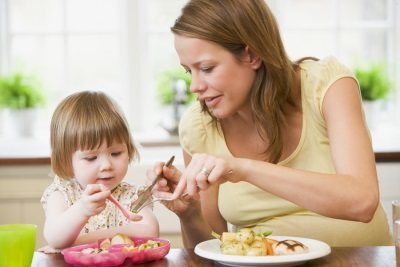
What can and cannot be given in drinks?
Getting enough fluid to replenish losses from vomiting and diarrhea is extremely important during rotavirus infection. First of all, the child should receive water-salt solutions - from pharmaceutical preparations or prepared independently. You can also give your baby herbal teas with mint and chamomile.
When the symptoms begin to subside, you can give your baby rice water, jelly, rosehip compote, apple and carrot compote, and dried blueberry compote. Carbonated drinks and tea with milk should be excluded from the child’s diet.
Prohibited Products
Rotavirus infection disrupts the functioning of some digestive enzymes. This concerns lactase, an enzyme that breaks down lactose contained in milk. As for infants, impaired absorption of mother's milk is rare. As a precaution, milk consumption during breastfeeding should be reduced to 50-75% with a gradual increase. If we talk about older children, during the recovery period it is necessary to exclude all dairy products of animal origin from the diet.
There is one more restriction on nutrition for RVI. Products containing coarse fiber are excluded from the diet. Fiber is a vegetable carbohydrate that is not digested in the human body, but has a beneficial effect on the gastrointestinal tract, cleansing it. With an intestinal infection, it will only irritate the mucous membranes of the organs, so you should not give turnips, radishes, or white cabbage.
You should absolutely not give your child store-bought sweets, chips, carbonated drinks, ice cream, or very cold or very hot drinks during illness. You should not eat fried, spicy, fatty or salty foods.
Recipes for water-salt solutions for rotavirus
Homemade solution
Pour two tablespoons of sugar into a liter of water, stir, add baking soda and salt a teaspoon at a time, stir again. Give this solution every five minutes in a small amount.
Salt solution with raisins
Boil a third of a glass of raisins in a liter of water for 60 minutes and then cool. When straining the raisins that will remain in the sieve, mash well so that more glucose gets into the broth. Add 4 teaspoons of sugar, 1 teaspoon of salt and 1/2 teaspoon of baking soda to the drink. The taste of this drink is very pleasant and children drink it with pleasure.

Nutrition during recovery
What to feed a child after rotavirus? Create a diet based on the principles of a therapeutic diet and the child’s taste preferences. There are several recipes for dietary dishes for rotavirus that best meet the needs of the child’s body during the period of rotavirus.
You will need:
- liter of clean water;
- round grain rice - from 2-4 tablespoons.
Before preparing the decoction, the cereal must be thoroughly washed: it absorbs harmful substances and active components of fertilizers from the soil. The best option is to soak the rice overnight and prepare the drink in the morning.
Bring the water to a boil and add the cereal. Reduce heat to low and simmer the mixture for two hours. The readiness of the broth can be determined by the condition of the rice: it should completely soften and turn into a paste-like mass.
Press the mixture through a fine sieve or cheesecloth. Add a pinch of salt and baking soda and mix well. Cool the drink and give it to your child throughout the day.
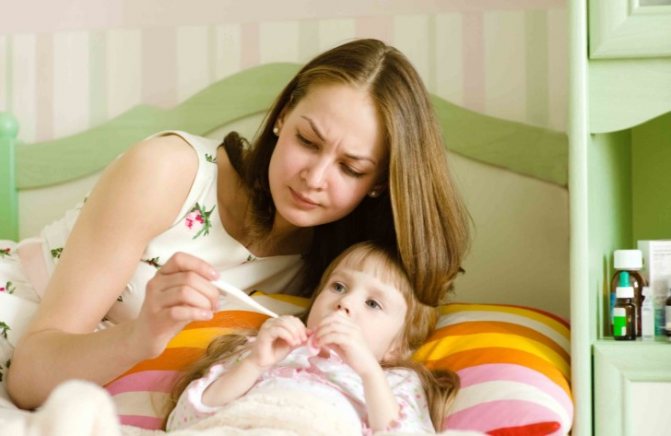
Required ingredients:
- clean water – 1 l;
- dried raisins - a third of a glass;
- rock salt – 1 teaspoon;
- baking soda – 0.5 teaspoon;
- sugar – 4 teaspoons.
The drink for the child is prepared immediately before consumption. Place a small container on the stove, fill it with clean water and bring to a boil. During this time, prepare the raisins - rinse under the tap, or better yet, soak for half an hour. Add raisins to boiling water and simmer over low heat for 3-5 minutes.
Cover the pan with a lid and wait for the drink to cool (2-3 hours). During this time, the liquid will absorb the maximum of nutrients. Now strain the broth through a fine-grained sieve or cheesecloth, and add seasonings (sugar, salt, soda). Bring to a boil again, boil for 2 minutes, and cool again. Give this drink to your baby in small portions, warm.
To prepare jelly for a child with rotavirus you will need:
- freshly squeezed berry juice or puree;
- pure water;
- potato or corn starch;
- sugar.
This recipe can be easily modified depending on your taste. You can take any berries, depending on the season, but it is better not to use too sour ones. When using sweet berries, you can omit sugar from the recipe; the amount of water also varies according to the desired thickness of the jelly.
The classic proportions of juice and water are 2 to 3. They are mixed and the resulting liquid is divided into 5 parts. One fifth is mixed with 50 g of starch, and the rest is covered with sugar and cooked over low heat. After the drink has boiled, add the starch solution and continue to simmer for another 3-5 minutes.
To make the jelly thicker, increase the amount of starch to 75 or even 90 g. Before giving the child a drink, you need to make sure that it has cooled down.
- fresh carrots – 300 g;
- sweet apple – 0.5 pieces;
- a drop of rapeseed oil.
Wash the carrots, peel and cut into small pieces. Pour half a glass of clean water into the pan and bring to a boil. Throw in the carrots and simmer for 10–15 minutes.
Peel half a medium-sized apple and grate it on a coarse grater. Add it to the pan with the carrots and simmer for another 3-5 minutes. Beat the resulting mixture with a blender until it becomes a homogeneous puree. Add some oil at the end.
Required Products:
- bell pepper – one each red, yellow and green;
- tomato – 1 medium-sized fruit;
- one young zucchini;
- vegetable oil – 2 tablespoons;
- a pinch of salt.
Wash the vegetables, peel the seeds and cut the pepper and zucchini into small pieces, and the tomato into large pieces. Place all ingredients in a container that will be used for baking (ceramic, heat-resistant glass, cast iron). Cover the dish with a lid or seal with foil.
Vegetables are cooked in the oven at 200 degrees for 20–30 minutes. In the last few minutes, the lid can be removed to create a delicious crust. The dish will appeal not only to children, but also to adults as a side dish.
To prepare an omelet you need the following ingredients:
- chicken eggs – 3 pcs.;
- low-fat milk (can be replaced with boiled water) – 0.5 cups;
- a teaspoon of butter;
- a pinch of salt.
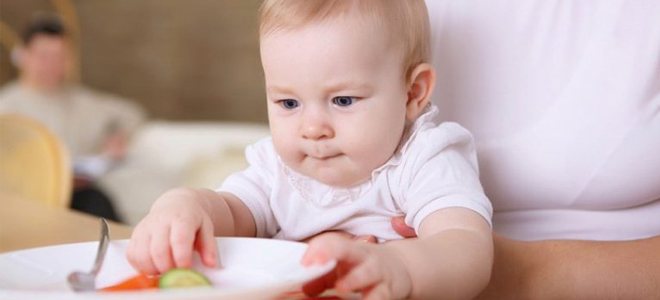
The eggs are ground with salt and mixed thoroughly, then the milk is carefully added. The resulting mixture is poured into a steamer bowl, previously greased with butter. Approximate cooking time is 20 minutes.
The dish can also be prepared in a multicooker by selecting the appropriate mode in the device menu. The omelette will turn out no less tender and tasty. If desired, you can add some vegetables to it - for example, tomatoes.
For cooking, you can use both white and black bread. The method of cutting crackers depends on its type. Professional chefs recommend cutting brown bread into cubes, and white bread into slices. It is believed that this improves the taste of crackers.
After slicing, the bread is distributed on a baking sheet and sent to the oven, preheated to 120–150 degrees. The cooking time should not exceed 60 minutes. After this, the crackers are placed in a dry container until they cool completely. The finished dish can be served at the table during meals, or used as a light snack. You need to store crackers in a bag, paper or fabric bag.
You will need:
- ripe, unripe or overripe fruits (any) – 1 kg;
- clean water – 150 ml;
- sugar – 1 kg;
- a pinch of citric acid.
Take any fruit - apricots, apples, peaches, pears, and rinse thoroughly under running water. Remove pits, seeds, spoiled areas. Cut the fruits into medium-sized cubes, place in a saucepan and cover with water. Simmer the mixture until the fruit is completely cooked.
Rub the resulting mass in a blender and add citric acid to it (it will prevent the marmalade from darkening). Add sugar and cook the mixture over low heat in several stages: after boiling, cool and then reheat. As a result, the solution should evaporate by about a third.
Pour the liquid into molds and place in a dry, well-ventilated place. After drying, the finished marmalade is cut with a knife and served.
You should switch from your usual diet to a dietary diet as soon as the first symptoms appear. It is important to free the body from additional work in order to actively fight the virus. In the first days, the body, weakened by the disease, does not want to eat at all, and it is not recommended to force the patient to eat normally. As complementary food, you can give chicken broth made from skinless chicken breast.
The most important thing is to drink enough fluid. At the same time, the list of permitted drinks includes only light decoctions of chamomile and raisins and water, and store-bought sodas and sweet juices should remain far away. Due to the high content of pectin, permitted drinks will not only restore fluid balance, but will also remove toxins that poison the health of an already sick person.
When the symptoms begin to subside, the patient begins to feel better and his appearance improves, he can gradually be switched to a lighter diet. The consumption of steamed chicken products is acceptable here. In addition, the patient is allowed to eat fish, light soup with vegetable broth and cereals, heat-treated vegetables, puree, baked apples, bread crumbs without salt and spices, and a little honey.
However, it is worth monitoring the patient appointment by appointment. The reaction to the introduced diet may vary. If symptoms intensify, it means that the body is not yet ready to switch to additional nutrition. For now, you should limit yourself to rice porridge and semolina.
Since the digestive tract is irritated, food should be consumed at medium temperatures. It should not be cold, as it is harder to digest. Also, dishes cannot be hot, otherwise they can burn the esophagus and stomach, which will lead to even greater irritation.
Even if the symptoms have completely disappeared, the disease does not remind you of itself - this is not a reason to stop the diet and start eating your usual food. A diet after rotavirus infection is necessary for at least two more weeks to give the body the opportunity to recover and avoid dangerous complications.
Eating monotonous food every day can lead to serious apathy. The patient must be delighted with delicious dishes that can be easily prepared from approved dietary products.
Suitable as a snack or dinner for rotavirus. This sweet puree will appeal to both children and adults. In addition, it is not at all difficult to prepare.
- Boil a couple of carrots and bake apples in the oven.
- Using a blender, make a puree.
- Add a teaspoon of honey to the puree for sweetness.
It is easily digested by the body and does not cause a feeling of heaviness.
Delicious meat dish for lunch. It's easy to make and sure to please everyone. The cooking method is below.
- Cut the chicken fillet and place in a baking dish.
- Cut the vegetables into strips (tomatoes and bell peppers are suitable).
- Place the chopped vegetables on the fillet and place in an oven preheated to 180 degrees.
- Bake for approximately 30 minutes.
Chicken fillet is rich in protein, but is completely lean, so it is ideal for therapeutic nutrition for rotavirus.
Vegetable stew
Vegetables are rich in fiber, which helps cleanse the body, so eating them is useful when infected with a viral infection. To prepare the stew, you should pick up an eggplant, a couple of carrots, a couple of tomatoes, cauliflower and beans. Cooking method:
- Boil cabbage and beans separately for 7 and 10 minutes, respectively.
- Place all ingredients, cut into cubes, into a frying pan.
- Vegetables should be simmered over low heat with the addition of a small amount of water.
- Simmer until soft and ready.
This dish is suitable as a dinner, since stewed vegetables cannot overload a sick body.
Diet after illness
To ensure sufficient recovery of the digestive tract after illness, the following foods should be limited for at least 2 weeks after recovery:
- Drinks and foods at low temperatures, such as ice cream;
- Bean dishes;
- Rye bread;
- Beetroot;
- Millet porridge;
- Whole milk.
If a child gets sick during the introduction of complementary foods, you should return to trying new foods no earlier than after a month.
To help a child fight rotavirus, it is necessary to follow the clinical recommendations developed by the medical community. These recommendations include rules and treatment tactics to eliminate the symptoms of the disease and restore balance in the body after an infection. Treatment of rotavirus is symptomatic. The disease has a favorable prognosis if the doctor's instructions are followed.
Nutrition of children in the first month after rotavirus infection
If a week has passed since the child suffered from rotavirus, then the diet can be expanded. The diet includes butter and vegetable fats, which are added in small quantities to cereals and vegetable purees. For sweets, honey is allowed; you can add a little of it to tea. A small patient needs to renew his strength, so it is advisable to give him meat broths, soups with meatballs, steamed meat or fish cutlets.
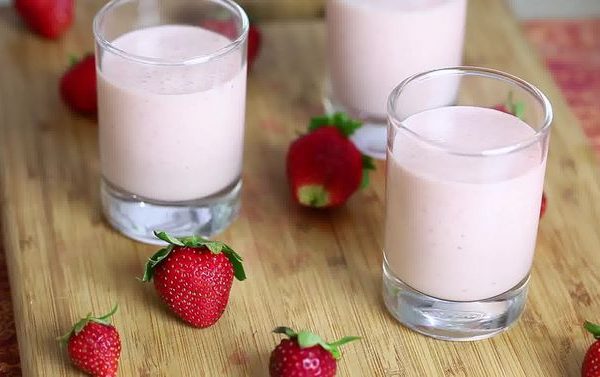
At the end of the recovery period, you can cautiously try giving fermented milk products - yogurt or kefir.
If the baby tolerates them normally, then the diet can already be expanded. You should give up chocolate, baked goods, soda water, and caramels for at least a month. To cheer up children, you can offer them dry cookies and sweet crackers. Here is a sample menu for a diet for the recovery period:
- breakfast: steam omelette, crackers, tea with honey;
- second breakfast: baked apple, a spoonful of sour yogurt without additives;
- lunch: chicken broth with rice, mashed potatoes, steamed chicken cutlet;
- afternoon snack: jelly, dry cookies;
- dinner: rice porridge with water, a piece of boiled fish.
First aid

The standard course of the disease begins with:
- sudden increase in temperature;
- vomiting;
- loose stools;
- excess gas formation.
Thus, when deciding what to do if you suspect an infection, you should first of all pay attention to the most striking symptoms and start with symptomatic treatment .
How to quickly cure a baby
Treatment of rotavirus infection in children, if it is not accompanied by complications such as incessant vomiting or extremely high fever, follows a standardized scheme in accordance with clinical recommendations for providing medical care to children with rotavirus infection.
It is better to reduce the temperature with suppositories , since the tablets may not have time to be absorbed due to vomiting. You can go for walks with your baby, but only if the body temperature has returned to normal.
This rule does not apply to medicinal drinks , namely those that restore water balance (for example, Regidron) and do not allow the body to become dehydrated.
The main visible problems in the child are watery stools and frequent urge to have bowel movements . In this situation, the body loses a lot of fluid. Therefore, to replenish it, it is vital to give the child water. A suitable drink would be tea with lemon or berry juice.
put your digestion in order by taking age-appropriate medications:
- Activated carbon,
- "Smecta" or its analogues.
Who can get infected with the virus?
Course of the disease
As a rule, when the first symptoms of the acute period of the disease appear, the previous appetite disappears. It is replaced by a reluctance to eat, nausea and malaise. Pain in the upper abdomen and constant rumbling prevent the gastrointestinal tract from functioning normally. During this difficult stage, the main condition for keeping the patient is not to overload him with food.
Diet for rotavirus infection in children is an effective weapon in the matter of health improvement. The main thing is to constantly offer water and insist on taking it. Instead of water, a solution based on salt and water, herbal teas made from chamomile flowers, are also suitable. A little later, you can include homemade rosehip drinks and apple compotes.
It very rarely happens that a child with rotavirus wants to eat. If he refuses to eat, there is no need to force him. The body is fighting a viral infection and the additional load on digesting food can distract from the protective function, the child’s health is weakened. Usually after a couple of days the desire to eat is restored.
If an adult catches the infection, he will also not bypass the therapeutic diet. It will be similar to what is prescribed for children. The conditions remain the same. To keep the body in normal condition, you should drink as much fluid as possible. Preferably, pure still water. During treatment, coffee, strong black tea and alcohol are strictly prohibited.
When the body feels better and the symptoms disappear, you can safely cook lean poultry and rabbit meat, dried fruit compote and sit down at the table. It is worth switching to a normal diet gradually and only when the attending physician confirms the situation of recovery.
If an adult feels that he tolerates the infection easily, he cannot throw the diet aside. In addition to the main period, there are complications that are very difficult for a weakened immune system to cope with.
Any diet involves some dietary restrictions. For a therapeutic diet aimed at restoring health after fighting rotavirus, there are quite strict boundaries. Since the virus has an effect on the entire body, including impairing the functioning of the digestive system, you should adhere to all recommended nutritional rules. During treatment it is necessary to avoid:
- fatty foods (this includes both meat and vegetables fried in oil);
- milk (all dairy and fermented milk products, including cheese, sour cream), they are prohibited because they can irritate the gastrointestinal tract, increasing the symptoms of the disease;
- bread and pasta of any kind;
- sweets, pastries, desserts in any form;
- smoked products, sausages and sausages;
- canned food, both factory-made and home-made;
- millet, pearl barley and barley, they are too heavy for weakened digestion;
- onions, garlic, hot peppers, radishes, cabbage - they are all somewhat spicy and can only harm the stomach and intestines, increasing painful symptoms;
- coffee, black strong tea;
- semi-finished products and all kinds of fast food (minute porridge also refers to prohibited food for the duration of treatment).
All these foods cannot be eaten. Everything that is not prohibited can be consumed, but there are some conditions. During the first days, they should not be included in the diet of someone who has contracted the infection. This could be dangerous to his health. He should be fed porridge - rice and semolina. They carefully envelop the walls of the stomach without causing irritation or increased painful symptoms.
After these days, corn porridge and oatmeal, still with water, are introduced into the diet. You can additionally add jelly as a drink. This drink also has a beneficial effect on health, supporting the normal functioning of the digestive system.
What to do if the infection affects a baby who is breastfed and has not even started complementary feeding yet. Under no circumstances should you stop breastfeeding. This milk contains everything a small child needs to cope with the virus. If the child has already been introduced to complementary foods, you should refuse them until the baby returns to normal.
It is recommended to replace artificial formulas with lactose-free ones so as not to irritate the baby’s digestive system. It is important to monitor the child’s condition constantly and be under the supervision of the attending physician. It should be remembered that small children tolerate rotavirus much more difficult than adults, which is why they need the care and support of older loved ones.
To protect yourself and your children from rotavirus infection, you should carefully monitor your personal hygiene: wash your hands before eating, brush your teeth regularly and avoid being near people infected with the virus.
Diet is the main cure for rotavirus infection, so nutrition should be given great importance. Do not consume prohibited foods, overeat or starve. By following the rules of the diet, the patient guarantees a speedy recovery and the absence of complications. It is important to take care of yourself and your health, receive proper treatment and eat well.
How to treat rotavirus

Children aged 1 to 3 years are most susceptible to rotavirus. How many days the disease is treated depends on many factors:
- age,
- conditions of infection,
- detection time,
- immunity status, etc.
The average duration of the disease is up to 7 days . At an older age, the child’s body produces antibodies that significantly shorten the duration of the disease and facilitate its course.
Specific therapy, as a rule, is not used, but the main manifestations of the disease will have to be eliminated.
Fighting dehydration
One of the main problems with rotavirus is dehydration . A large amount of fluid and nutrients is lost or does not enter the body during diarrhea, vomiting, increased sweating, high fever, and refusal to eat.
Antibiotics
Sometimes, when treating rotavirus, doctors prescribe antibiotics, diagnosing an unidentified acute intestinal infection. But they will not have much effect, since the disease is viral and not bacterial in nature .
It makes sense to use antibiotics when:
- the presence of blood in the stool,
- suspected cholera,
- prolonged diarrhea with Giardia in the stool.
In other cases, the prescription of antibiotics is more likely a reinsurance than a full-fledged treatment.
How to cure at home

- provide the body with sufficient fluid,
- stabilize body temperature,
- choose a therapeutic diet,
- ensure the strengthening of the body.
The main difference between a hospital is that people go there in difficult situations , for example, with incessant vomiting and diarrhea, when the child’s dehydration becomes critical. Another difference is that at home, in addition to medications, folk remedies are sometimes used.
What is the treatment?
Comprehensive treatment of rotavirus infection consists of methods to combat symptoms. This:
- rehydration of the body (treatment of diarrhea);
- taking sorbent drugs (Smecta, Creon);
- normalization of temperature;
- special diet.
When creating a diet, be sure to take into account the child’s age and types of feeding. Breastfed and bottle-fed babies eat differently, and after 1 year, children already receive adult food.
The main conditions for successfully combating the disease are a strict diet and plenty of fluids. By following them, you will greatly help your baby’s body overcome the disease.
What to feed a child with rotavirus infection if he is still an infant? More and more experts are coming to the consensus that for breastfed children, there is nothing better than mother's milk. Even if a child has a confirmed intestinal infection, you should not deprive him of this most valuable product, for which there are simply no artificial analogues.
Breast milk provides the baby with antibodies against many pathogenic microorganisms, thereby forming immunity. It also contains some hormones that help restore damaged intestinal cells. The transition from natural nutrition to artificial nutrition during illness will not contribute to a faster recovery, but, on the contrary, will slow it down.
What feeding plan should you follow? It is advisable to breastfeed your baby more often than usual so that the baby receives food in small portions. In addition, the sucking reflex calms people when they feel unwell and helps them fall asleep. If the baby refuses more frequent feedings, you can let him eat as usual, that is, whenever he asks. When the rotavirus infection is left behind, milk portions during feeding are restored to the usual ones.
If a child is fed formula, the amount of food and the time intervals between meals must also be reduced. You need to focus on 7-8 meals a day, give food every 2.5-3 hours in portions of 60-100 ml. If the baby’s condition is not the worst, you can feed him 5-6 times a day, every 3.5-4 hours, 140-200 ml.
If rotavirus develops rapidly and the baby’s condition is serious, with incessant vomiting and diarrhea, you need to try to feed him more often (see also: what and how to feed a child after vomiting?). During the day this should be done at least every 2 hours, and at night - every 6 hours. A serving of food should be 10-50 ml.
If this amount of food is not enough for the child, it is allowed to give him a glucose-saline solution. In 1 liter of clean drinking water, dissolve 1 teaspoon of table salt, half a teaspoon of baking soda and 4 teaspoons of sugar (or 1 tablespoon). To make the solution taste more pleasant, you can dilute it with raisin decoction. It is also allowed to supplement the baby with fruit drink.
When the child gets better, he is given more and less food. After 5 days, the porridge can be diluted with vegetable decoctions. New products are introduced into the menu only 14-21 days after final recovery.
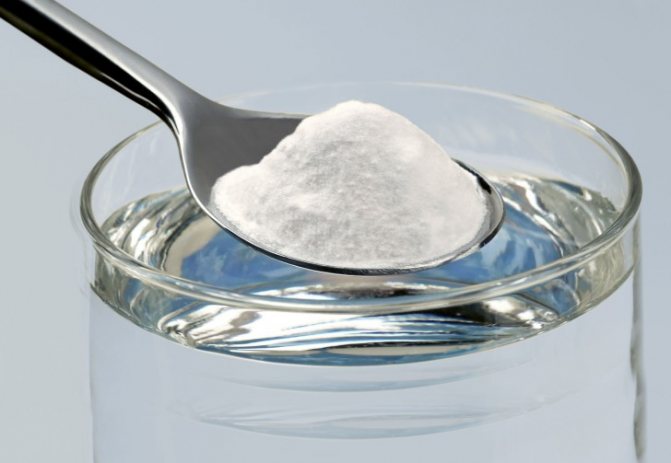
How to feed a child with rotavirus or other intestinal infection, when he has already switched to an adult diet? Firstly, he should eat only homemade food and only fresh food. Secondly, food should be as gentle as possible physically and chemically. The most acceptable methods of cooking are stewing or boiling, while frying is considered unacceptable.
The amount of food consumed should be reduced by a quarter, and in the most severe cases - by a third or even half. First of all, the amount of fats and carbohydrates is reduced. Protein, contained in meat, cottage cheese, eggs, should be left as much as recommended for age, since it is this that retains fluid in the body. If you have rotavirus, you should also ensure your child drinks plenty of fluids. Meals should be 5-6 times a day.
There is a list of foods that should be excluded from the diet of children during illness. What not to feed children with rotavirus:
- sweets (sugar - up to 30-40 g per day);
- fresh fruits and berries, dried fruits, vegetables;
- fatty meat and fish;
- whole cow's milk and other dairy products;
- bakery products;
- millet, pearl barley and barley porridge;
- pasta;
- canned foods;
- legumes;
- onions and garlic.
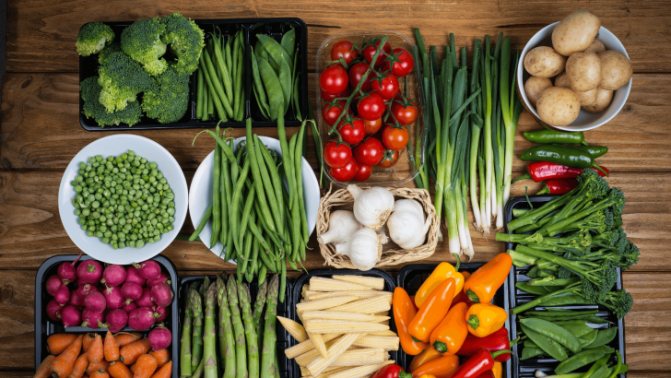
What can you eat if you have rotavirus infection? In the first 5-7 days this is:
- low-fat broths;
- boiled meat or fish;
- semolina, rice or buckwheat porridge with butter;
- omelette (see also: is it possible to eat omelette while breastfeeding and is it harmful?);
- low-fat cottage cheese;
- crackers and savory cookies;
- drinks: green tea, rosehip, blueberry or quince decoction, liquid jelly, slightly alkaline mineral water, glucose-saline solution, Regidron.
A few days later, forbidden foods are returned to the diet, and dishes are served not pureed, but in the form in which they were prepared. When complete recovery is confirmed, the diet is necessary for another month.
Folk remedies
Folk remedies should be used exclusively:
- in combination with medications,
- after consultation with a doctor,
- if the child is not allergic to the components of the product.
Dried blueberries have anti-inflammatory and disinfectant properties . Blueberry compote will be useful for the gastrointestinal tract - it will help remove toxins from the body faster.
Water based on dill seeds helps cope with intestinal colic. A teaspoon of seeds is infused in a glass of boiling water. For children over 2 years old, you can give 500 grams of infusion every 2 hours.
Raspberries will help reduce fever . You can brew tea from raspberry leaves - a tablespoon of the product per glass of boiling water. You can make a fruit drink from raspberry jam and drink it 1-3 times a day. You can also relieve the heat with water rubdowns (without alcohol).
Overview of the tools used
What medications are most often prescribed for rotavirus? Below are the most effective means that can quickly cope with the virus.
Linex effectively combats stool disorders and helps normalize intestinal microflora. Thanks to Linex, you can restore the gastric and intestinal functions of the body in a short period of time. The medicine allows you to cure an infectious disease at home.
The medication can be prescribed for the treatment of children and adults who suffer from diarrhea of various etiologies, dysbacteriosis, and flatulence. The drug is absolutely safe, so it can be used to treat infants. As a rule, doctors prescribe taking two capsules of the medicine several times a day. Children need to drink one capsule twice a day.
Nifuroxazide is an antimicrobial agent that is used to treat infectious intestinal diseases. Nifuroxazide has antimicrobial and antiparasitic properties. The main substance of the drug is able to fight most pathogens of intestinal diseases.
An antimicrobial medication can be prescribed in cases where the patient is concerned about acute and chronic diarrhea caused by gram-positive and gram-negative bacteria, intestinal dysfunction that occurs while taking antibiotics, food poisoning, and autoimmune chronic gastritis. Nifuroxazide is used to treat adults and children.
Cerucal is an antiemetic drug that normalizes the tone of the digestive system. The medicine is made on the basis of metoclopramide. The drug is capable of selectively blocking dopamine and serotonin type receptors.
Cerucal effectively copes with the normalization of motility of the upper gastrointestinal tract. The effect of the active substance helps to increase the tone of the smooth muscles of the intestinal walls. Peristalsis of the small intestine improves.
Cerucal effectively prevents gastrostasis, pyloric reflux, and esophageal reflux. Thanks to Cerkal, you can effectively cope with vomiting. However, vomiting, which is psychogenic and vestibular in nature, cannot be treated with this medication.
Important! Drink Cerucal without exceeding the recommended dosage so as not to harm your health. Use medications correctly, this will quickly get rid of the disease.
Enterosgel paste is an effective antidiarrheal medication. The main active ingredient is polymethylsiloxane polyhydrate. Enterosgel has the ability to absorb medium molecular toxic metabolic products, heavy metal salts, and alcohol.
The drug removes accumulations of harmful substances naturally from the body. The product allows you to eliminate the manifestations of toxicosis, improves the functioning of the intestines, liver, and kidneys. Enterosgel is able to normalize urine and blood counts, protect the organs of the digestive system from chemical and mechanical influence.
The medicine helps to renew the mucous membrane and restore the formation of mucus and microcirculation in the body. The active components of the medication make it possible to normalize the healing process of the protective layer located on the walls of the gastrointestinal tract.
In addition, complete recovery is accelerated. The active components of Enterosgel are unable to be absorbed into the intestines, which prevents them from undergoing metabolic and chemical transformations. The release of the active substance with harmful elements occurs 12 hours after administration.
How to treat at sea

The disease spreads especially quickly in children's groups. It is very difficult to protect yourself from infection - even following the rules of personal hygiene may not help. At sea, treatment of infection will not differ from treatment at home. Since the infection is acute, medical insurance will cover the costs and the receiving party will be obliged to provide the baby with qualified care.
However, you should take care in advance to help your child and protect yourself as much as possible from “acquaintance” with the disease , observing the following rules:
- Take enterosorbents, antipyretics, and antiviral drugs with you in your first aid kit so that you can provide help faster.
- Do not buy food from beach vendors - they can carry rotavirus.
- Try to eat at catering establishments less often . If possible, it is better to cook your own food.
- Wash purchased foods thoroughly before eating.
- Wash your hands before eating.
- Boil water and milk for drinking . Use bottled, not tap water.
- Wash toys periodically.
- Always have disinfectant wipes and gels with you.
- If you have the opportunity to choose disposable or reusable tableware in catering establishments, it is better to give preference to disposable tableware .
How to help a child: Komarovsky advises
- Do not under any circumstances allow the body to become dehydrated . Not only the digestive system, but also the nervous system can suffer from this, and the functioning of the lungs can also be disrupted.
- If the child does not want to drink, the solution should be instilled into the mouth with a regular disposable syringe.
- The first infection (from 6 months to 2 years) is a severe intestinal infection.
- The diagnosis can only be made in laboratory conditions , so the treatment tactics for watery stool will always be the same.
- You should not force feed a child when sick . 1 day of fasting will not cause mortal harm to the body.
- You should always have oral rehydration products in your first aid kit at home . If you don’t have them, you can prepare it yourself - dissolve 2 tablespoons of sugar, 1 teaspoon of salt and 1 teaspoon of baking soda in a liter of water.
- Vaccination is the only effective method of prevention . protects by 80% from the disease and by 90-95% from its severe forms.
- It is worth getting vaccinated between the ages of 1.5 and 8 months . Later, the child’s body will begin to produce antibodies on its own.
Useful video
Dr. Komarovsky talks about rotavirus infection in children:
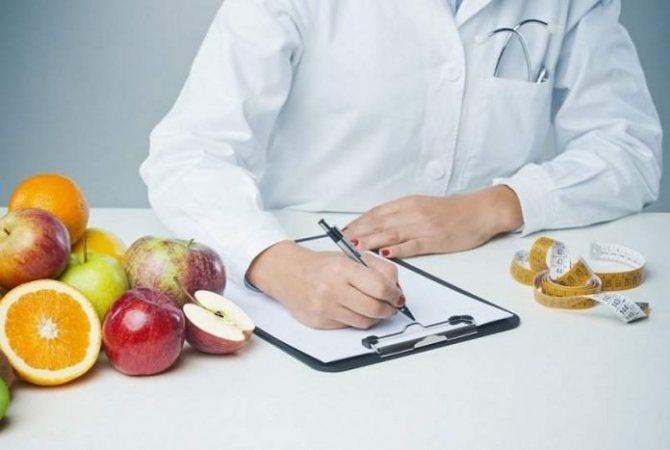
Regular diets don't help? Explore weird but interesting celebrity weight loss methods? Read here.
It happens that, out of the blue, a person suddenly develops a fever, a stomach ache, vomiting and diarrhea. What kind of misfortune is this, because there were not the slightest prerequisites for any disease. Most likely you have contracted a rotavirus infection, which, as a rule, always begins unexpectedly. Rotavirus, or as it is also called “intestinal flu,” is one of the most common intestinal infections. At the first symptoms, you should immediately take action, namely, start following a therapeutic diet aimed at restoring the body after “food poisoning.”
Possible complications
Consequences after rotavirus infection rarely occur if assistance to the patient was provided late or incorrectly.
Among the serious complications, the following conditions should be highlighted:
| Name | Description |
| Dehydration | With severe vomiting and diarrhea, a large amount of fluid leaves the patient's body. If it is not replenished, dehydration occurs. |
| Secondary infection | The clinical picture worsens, the disease becomes complex, worsening the child’s condition. |
| Cell death | Prolonged high temperature leads to complications. Cells die, primarily in the brain. |
| Damage to the central nervous system | Consciousness is disturbed, convulsions appear. The condition is characterized by loss of consciousness and delirium. |
| Acetonemic syndrome | Dehydration of the body leads to disruption of material metabolism. Acetone and acetoacetic acid accumulate in the blood. They poison the child’s body, increase vomiting, cause drowsiness, lethargy and intestinal pain. The smell of acetone is felt from the mouth. |
Due to weak immunity in children, death occurs in 2-3% of cases. After the patient recovers, the prognosis is favorable, the possible risks of consequences are minimal.
What is rotavirus infection
Rotavirus infection is a contagious viral disease transmitted by airborne droplets, through consumption of low-quality or spoiled food, and through dirty hands. Rotavirus infects the mucous membrane of the gastrointestinal tract and is then eliminated from the body naturally. However, not every intestinal infection is a rotavirus; the diagnosis can be accurately determined in the laboratory after testing.
Symptoms of rotavirus infection:
- Sneeze;
- Heat;
- Sharp pain in the abdomen;
- Diarrhea;
- Vomit;
- Malaise and weakness.
According to statistics, about 137 million people in the world suffer from rotavirus infection, while only a quarter of them are hospitalized. In order to avoid hospitalization, it is necessary to urgently take a number of measures to treat the disease. The main methods of treating rotavirus infection are: diet, drinking regimen and additional intake of rehydration solutions.
What does "rotavirus" mean?
Often, patients do not realize that they have contracted a serious infection: the primary symptoms that arise are attributed to a cold, they prescribe treatment for themselves, and continue to eat as before the illness. However, this is by no means the wrong decision. Such an attitude towards your health or the health of your baby is unacceptable. The most important condition for mild treatment of rotavirus infection is timely diagnosis. At a more severe stage, the disease becomes more difficult to treat.
Course of the disease
Each infection, in particular rotavirus, has its own period of progression. Usually there are three of them.
- Initial period. Depending on the strength of the infecting virus, the first symptoms may occur 12 hours or more after it enters the body. Most often, infection occurs in public places: educational institutions, sports clubs, and transport.
- Acute period of the disease. Within a week, the disease reveals all its “cards”. The patient suffers all the symptoms seriously, he feels sick, suffers from diarrhea and pain.
- Final period. At this time, gradual recovery and relief from unpleasant symptoms occurs. The patient returns to normal and feels better.
To speed up the third period, the period of recovery, you should follow the advice of your doctor and take prescribed medications. A diet for rotavirus will become an indispensable assistant in improving the patient’s health, so you should not pay little attention to nutrition.
Basic principles of diet for rotavirus infection in adults
In order to cure rotavirus infection at home, you should follow a soft, gentle diet aimed at replenishing fluid deficiency in the body. The first step is to exclude from your diet all dairy products, fatty, fried, smoked, pickled foods, as well as sweets and fresh baked goods.
In the first days, due to intoxication of the body, diarrhea and vomiting, there is a lack of appetite. However, in order to replenish all nutrient losses, it is simply necessary to eat, preferably 5-7 times a day, but in small portions. Food should be easily digestible, have binding and astringent properties in order to prevent diarrhea. It is recommended to eat porridges, low-fat soups, and wheat bread crackers during the diet. You can eat vegetables during your diet, but only boiled, stewed or baked.
With rotavirus, the human body is dehydrated, and therefore it is worth drinking as much fluid as possible. It is recommended to drink 50-70 ml every 30 minutes. You can drink both purified water without gas, as well as compotes and jelly from berries, and herbal decoctions. You can add sugar for taste.
For a speedy recovery, it is recommended to use rehydration solutions, which you can prepare yourself at home (for example, rice water, rosehip infusion), or purchase specialized drugs at the pharmacy (hydrovit, rehydron, humana, gastrolit), which are diluted with water and taken half a glass every 1.5-2 hours.
Diet and nutrition after the virus
Every day the child is recovering, the appetite is returning, and you can add a little variety to the meager dietary table. Below are examples of menus that will help you navigate the choice of dishes for your baby.
Sample menu. Option 1
| Meals | Sample dishes |
| Breakfast | Omelette and tea with crackers |
| Dinner | Chicken broth with a little rice, mashed potatoes |
| Afternoon snack | Baked apple, plain low-fat yogurt |
| Dinner | Rice porridge on water, steamed fish cutlet |
Sample menu. Option 2
| Meals | Sample dishes |
| Breakfast | Any water porridge with butter, carrots and applesauce |
| Dinner | Low-fat veal soup, steamed stuffed peppers |
| Afternoon snack | Dried fruit compote, crackers |
| Dinner | Chicken soufflé with stewed vegetables |
Sample menu. Option 3
| Meals | Sample dishes |
| Breakfast | Steam omelet, non-sour cottage cheese |
| Dinner | Chicken soup with cereals and vegetables + fish balls |
| Afternoon snack | Baked apple + rose hip decoction |
| Dinner | Steamed turkey cutlets and some mashed potatoes |
Features of the diet for rotavirus infection in children
Children are much more susceptible to rotavirus infection, especially at an early age (up to 2 years). The symptoms of the disease in children correspond to adults, however, treatment is much more difficult, since in childhood the immune system is not yet fully formed. The main method of treating rotavirus infection in children is diet, since there are no specialized drugs to combat rotaviruses.
If a child is breastfed with rotavirus infection , then the normal diet should continue, since mother's milk contains all the necessary vitamins, immunoglobulins and other beneficial substances. In this case, you should refuse other complementary foods. Infants who are bottle-fed must be switched to a dairy-free diet (porridges and mixtures that do not contain lactose).
The diet for rotovirus in children 2-5 years old according to Komarovsky is aimed at relieving inflammation in the intestines and replenishing fluid deficiency in the body. In the first 2-3 days, it is necessary to give the child porridge cooked in water without oil, lean broths, and crackers. In the following days, you can gradually expand your diet by adding lean meat and fish, steamed omelettes, potato, apple or carrot puree. Baked fruits (apples, pears) are recommended as snacks. At the recovery stage, when gag reflexes cease, temperature and stool normalize, it is recommended to include yoghurt in the child’s diet to restore intestinal microflora.
Basic rules of diet for rotavirus infection according to Komarovsky:
- Exclusion from the diet of dairy, fermented milk products, raw fruits and vegetables, carbonated drinks, sweets;
- Drink plenty of fluids. You should give your child a rehydron solution as often as possible, but since it tastes unpleasant, you can replace it with compotes, jelly, and berry decoctions. The child needs to drink 50 ml every 30 minutes;
- Meals should be fractional (7-8 times a day), but in small portions so as not to provoke vomiting;
- There is no need to force a child to eat;
- Before starting a diet, you should definitely consult your pediatrician.
List of permitted and prohibited products
Diet for rotavirus infection - allowed foods and dishes:
- Dried wheat bread;
- Low-fat fish or meat broth;
- Vegetable soup;
- Lean meat (beef, rabbit);
- Lean poultry (turkey, chicken);
- Low-fat fish (hake, carp, bream, pollock, pike);
- Eggs (1 hard-boiled egg per day);
- Buckwheat, rice, semolina;
- Potatoes, beets, tomatoes, carrots, cauliflower;
- Jam, honey
What does the rotavirus diet exclude?
Diseases such as intestinal flu and rotavirus infection develop rapidly in a dairy environment. During therapy, it is important to avoid kefir, fermented baked milk, milk, butter, sour cream, cheese, and others. In addition to the above, a diet for rotavirus infection in adults involves removing from the patient’s diet other foods that contribute to the development of pathogenic flora. What you should not eat if you have an intestinal infection:
- any sweets;
- bread, pastries;
- canned food, pickles;
- egg, pearl barley;
- smoked foods, fatty foods;
- pasta;
- garlic, onions, white cabbage, cucumbers, radishes;
- sausages, semi-finished products;
- any mushrooms;
- kiwi, citrus fruits that irritate the intestines;
- marinades, sauces (spicy and neutral), sunflower, olive and other vegetable oil.
Rotavirus infection or intestinal flu is an insidious and unpleasant disease. It begins as a common cold with a slight increase in temperature, sneezing, and runny nose. But further - more. Nausea, severe vomiting and diarrhea turn the patient's life into a real nightmare. Children especially suffer.

Diet for rotavirus infection can sometimes be almost the only method of treating the disease. After all, the virus is “not afraid” of antibiotics, sulfonamides and other similar drugs.
A specialist will prescribe drug therapy. In most cases, these are general antiviral agents. But following a diet is entirely the responsibility of the patient or his loved ones. What do you need to know about nutritional habits during the acute period, during the recovery process and after illness?
Menu for the week
Sample menu for a week for rotavirus infection (breakfast, snack, lunch, afternoon snack, dinner): Monday:
- Steamed omelette;
- Dried fruits compote;
- Bouillon. Wheat crackers 2 pcs. Steamed pollock fillet;
- Toast with jam;
- Boiled chicken fillet. Boiled grated carrot salad.
Tuesday:
- Buckwheat porridge on water;
- Kissel;
- Vegetable soup. 2 crackers;
- Boiled beet salad;
- Mashed potatoes. Boiled turkey fillet.
Wednesday:
- Semolina;
- 1 hard-boiled egg;
- Mashed potatoes. Steamed beef cutlets;
- Berry juice;
- Hake soup with pieces of fish. Dried wheat bread.
Thursday:
- Rice porrige;
- 1 hard-boiled egg;
- Vegetable cream soup with croutons;
- Compote;
- Stewed rabbit meat. Vegetable stew.
Friday:
- Carrot puree;
- Kissel;
- Cauliflower soup. Steamed fish cutlets;
- 1 hard-boiled egg;
- Mashed potatoes. Boiled beet salad.
Saturday:
- Steamed buckwheat;
- 1 hard-boiled egg;
- Chicken soup. Crackers;
- Rosehip decoction. Toast;
- Steamed carp fillet. Boiled carrot salad.
Sunday:
- 1 hard-boiled egg. Kissel;
- Toast with jam;
- Pike soup with pieces of fish. Dried wheat bread 2 slices;
- Green apple;
- Rice porridge on water. Turkey meatballs.
During a diet for rotavirus infection, you can eat even at night if you feel hungry. You can have a snack with a baked apple, grated carrot salad, and crackers.
Recipes
At the very beginning of treatment for rotavirus infection, during the period of exacerbation, the drinking regime plays the most important role rather than food. During this period, it is necessary to include rehydration solutions in the diet menu. You can use pharmaceutical preparations (hydrovit, rehydron), which are produced in the form of ready-made powders and are simply diluted with water. If you don’t have any at hand, don’t be upset; you can prepare decoctions of herbs and cereals at home, as well as water-salt solutions to replenish fluid loss in the body.
Water-salt solution for rotavirus infection
Water-salt solution for rotavirus infection
Ingredients:
- Water 1 liter;
- Sugar 2-4 tablespoons;
- Table salt 1 tablespoon;
- Soda 0.5 teaspoon.
Cooking method:
- Bring water to a boil, add sugar, salt and soda, stir until the ingredients are completely dissolved.
- Let cool. Take 50 ml of solution every 2 hours.
In order not to provoke excess salts in the body, it is recommended to use a water-salt solution during the diet in combination with other drinks (decoctions of berries, herbs).
Congee
Congee
Ingredients:
- Rice 3-4 tablespoons;
- Water 1 liter;
- Salt 0.5 teaspoon;
- Soda 0.5 teaspoon.
Cooking method:
- Pour water into a saucepan, bring to a boil, add rice and cook over low heat until fully cooked.
- Let cool slightly, then strain the broth through a sieve.
- Add 0.5 teaspoon of soda and salt to the broth, stir until the ingredients are completely dissolved.
Rice water has an enveloping effect and will help you quickly cope with diarrhea during an exacerbation of the disease, so it is recommended to use it in the first days of the diet.
Rose hip decoction
Rose hip decoction
Ingredients:
Cooking method:
- Grind the rose hips, pour them into a saucepan and add water in a ratio of 1:10 (i.e., take 1 liter of water for 100 grams of berries).
- Place the pan on gas, bring to a boil, cover with a lid.
- Leave the broth to infuse for 12 hours.
Rose hips are an effective remedy against pathogenic bacteria, especially the digestive organs, and therefore a decoction of these berries is extremely useful in a therapeutic diet for rotavirus infection.
List of products
Rotavirus infection is accompanied by weakness and loss of appetite (more details in the article: creating a diet for rotavirus infection in children). The child often vomits, which leads to dehydration and leaching of nutrients.
It is necessary to exclude from the diet foods that stimulate putrefactive processes and intestinal motility. During the period of exacerbation, children are fed low-calorie, easily digestible food. This requirement is due to a lack of enzymes and the body's inability to digest heavy foods. It is unacceptable to feed your child the following foods:
- fatty meat and smoked meats - goose, pork, lamb;
- high-calorie fish - saury, herring, stellate sturgeon, silver carp;
- fermented milk products (they are consumed during the recovery period);
- fresh pastries, black bread;
- pickled and salty dishes;
- confectionery;
- carbonated drinks.
During an exacerbation, you need to support a weakened body. It is necessary to ensure the supply of nutrients excreted through vomiting.
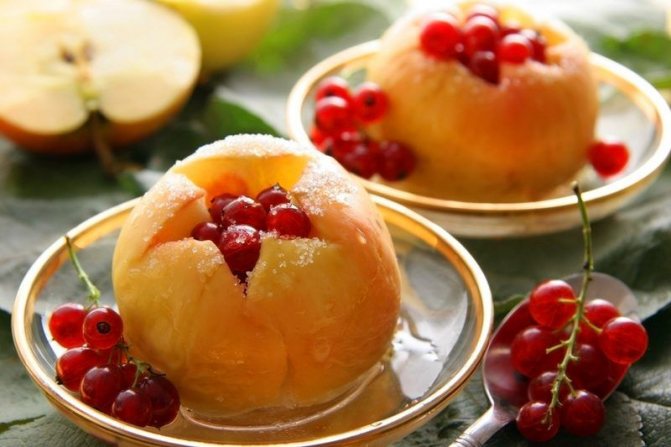
If you follow a diet, baked fruits and honey will replace your child’s usual sweets.
The rotavirus diet consists of the following foods:
- semolina, rice and buckwheat porridge, cooked in water without sugar and butter;
- steamed omelette;
- steamed fish and chicken cutlets;
- boiled vegetables;
- baked fruits, especially apples;
- honey, homemade marmalade;
- crackers.
Decoctions are an addition to rehydration medications. To prepare a simple drink with raisins, you need to pour 1/3 cup of berries into 1 liter of water and put on low heat until it boils. Boiled grapes are mashed to remove glucose, after which the liquid is filtered. Mix 4 tsp into the drink. honey and 1 tsp. salt. Drink 3-4 times a day, 0.5 cups.
To eliminate diarrhea, take rice water. To prepare it, add 3 tbsp to 1 liter of boiling water. grains and bring them to full readiness. Mix 0.5 tsp into the cooled and strained broth. salt and soda. Thanks to its enveloping properties, this remedy reduces the severity of rotavirus. Take in the first days of illness several times a day.
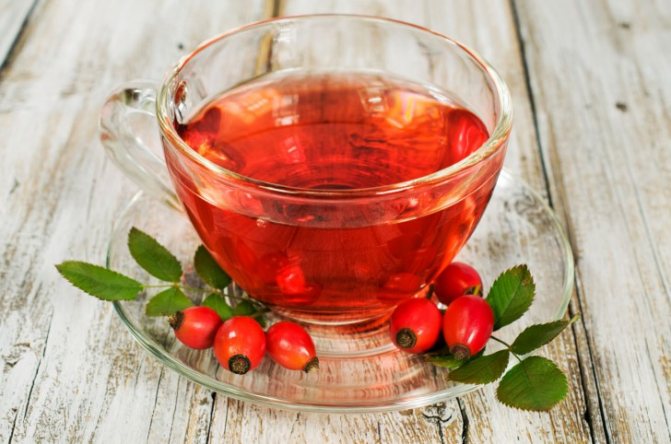
A decoction of rose hips will show a good result for diarrhea.
A drink made from rose hips has antiseptic properties. To prepare it, you need to chop 100 g of berries, pour 1 liter of water over them and put on fire until it boils. After this, the decoction is left for 12 hours, filtered and taken 60 ml 5 times a day. To give the drink a pleasant taste, you can add a few tablespoons of honey to it.



